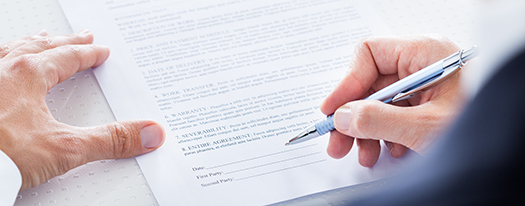Explanation of Settlement Documents

If you would like to learn more about the closing process, here is a great resource to explain.
HUD-1 Settlement Statement — The settlement statement details all the charges and credits to the purchaser and seller, listing the purchaser’s figures on the left-hand side of the page and the seller’s on the right. It will also provide an overview of the loan terms and a comparison of final figures with your lender’s Good Faith Estimate.
In addition to the settlement statement, you may also be required to review and sign various other settlement forms.
Closing Disclosure – A Closing Disclosure is a five-page form that provides final details about the mortgage loan you have selected. It includes the loan terms, your projected monthly payments, and how much you will pay in fees and other costs to get your mortgage (closing costs).
The Closing Disclosure is a new form. For most kinds of mortgages, borrowers who apply for a loan on or after October 3, 2015 will receive a Closing Disclosure.
Here is a list of some of these forms:
Truth-in-Lending Statement— This disclosure is required by federal law. This form will provide to the borrower an estimate of the annual cost of the loan and the total cost to the borrower over the life of the loan.
Promissory Note — Document evidencing your promise to repay the lender the principal amount you have borrowed, and setting forth the terms and conditions of repayment.
Deed of Trust — Document filed at the courthouse to secure the repayment of the loan and to establish the lender’s lien on the property. This document details the lender’s covenants and the process by which the lender may foreclose on the property if you do not make payments.
First Payment Letter — Statement showing the amount of the monthly principal and interest payment due on the loan along with the tax escrow and hazard insurance escrow (PITI) that the lender will be holding. The first payment letter statement will usually be given to you at settlement.
W-9 — IRS form to be signed by the borrower(s), giving your social security number and new mailing address. At tax time, this form makes it possible for the lender to report to the IRS the mortgage interest you paid. Consult your accountant or tax attorney with respect to deductibility.
Loan Approval Letter — Letter from the lender telling you that your loan has been approved on certain terms. You may receive this prior to or at settlement. The letter will include the loan amount, interest rate, number of years of the loan, and any additional requirements that must be complied with prior to or at settlement.
Tax Authorization — Written instructions to the local real estate taxing authority authorizing them to send the tax bill directly to the lender who is holding escrows for payment of that bill (if applicable).
Name Affidavit — Document showing variations of your name, as found in the public records or your credit reports. You must certify to the lender that you are the same person known as all those variations of your name.
Flood Insurance — Document evidencing your agreement to purchase flood insurance if the federal government ever determines your home to be in a flood hazard area. Although the majority of properties in this area are not in a designated flood hazard area, the federal government requires a flood certification for all federally insured loans.
Loan Application — You may be asked to sign a typed COPY of the loan application to acknowledge that there have been no material changes in your employment, marital or financial status. This form is a cleaned-up version of the one you or your loan officer filled out when you applied for the loan.
Termite Inspection — The purchaser or seller provides a report, from a licensed exterminator, indicating any evidence of wood destroying insects. The seller is responsible for any required extermination and repairs. A copy of the inspection report will be given to you at or before settlement.
House Location Survey — Drawing that shows the location of improvements (structures) within the boundaries of the property.






